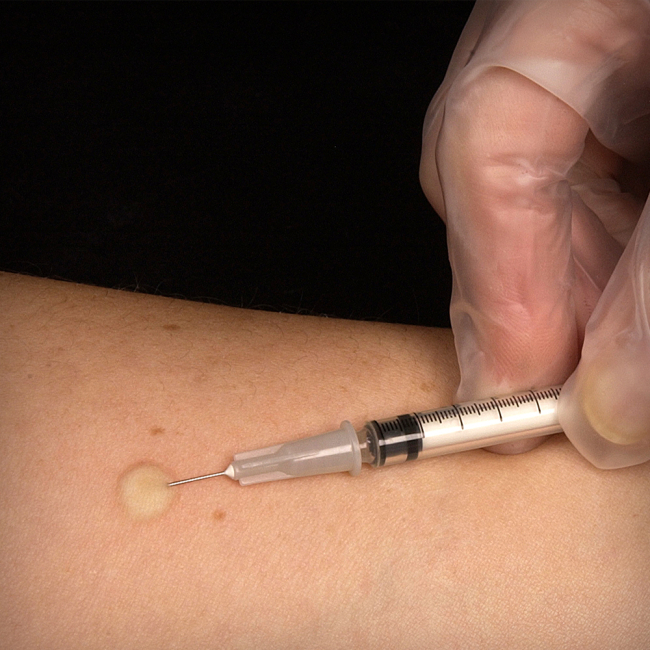
TB Skin Test
Tuberculosis, or TB, is a highly contagious, infectious disease of the lungs that causes chronic coughing, weight loss, fever and death. Fortunately, a TB skin test is about as simple as it gets for diagnosing the infection: Doctors prick the skin, inject a small amount of TB proteins, and two to three days later check for a raised bump indicating an immune response.
A positive test means that the person has been infected with TB, not that they have active TB disease. The ability to detect TB was first discovered by Robert Koch in 1890 using guinea pigs. Thanks to Koch’s finding, the first practical skin test was invented in 1909. It is still used today as a way to screen health-care workers and others. Caught in this stage, when the bacterium is latent, TB infection is usually treatable with preventive therapy that reduces risk of developing full-blown disease.
Epidemiologist George W. Comstock, who worked at what would become the Johns Hopkins Bloomberg School of Public Health for 50 years, used this test in early prevention and vaccine trials in the 1950s and 1960s, studies that proved the effectiveness of a TB treatment that remains in wide use. In 2014, 9.6 million people around the world were sickened with TB and 1.5 million died.
